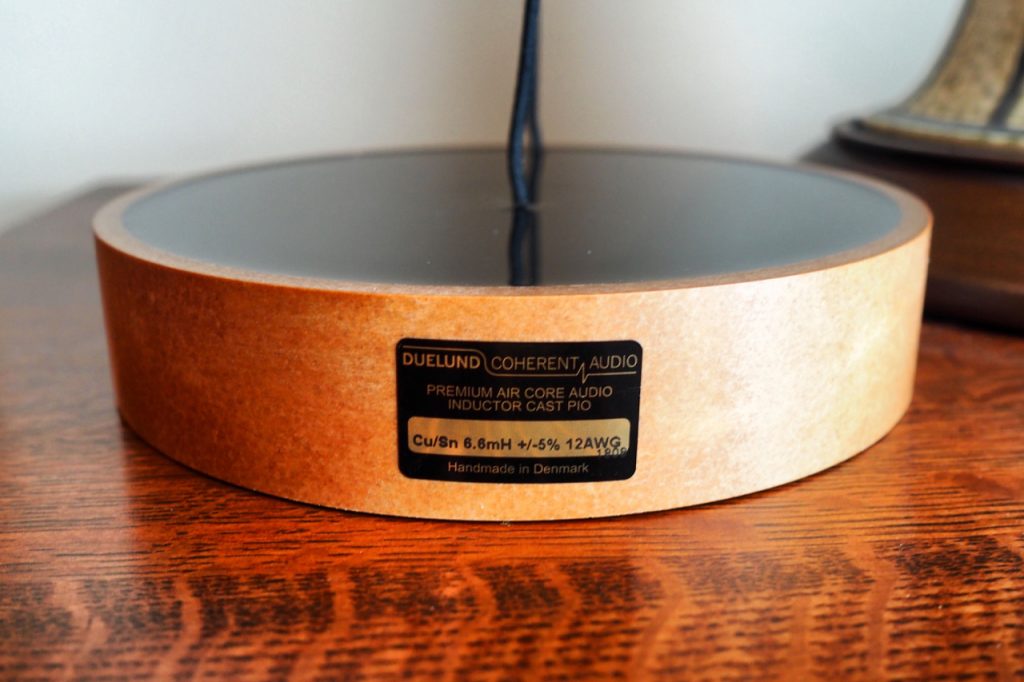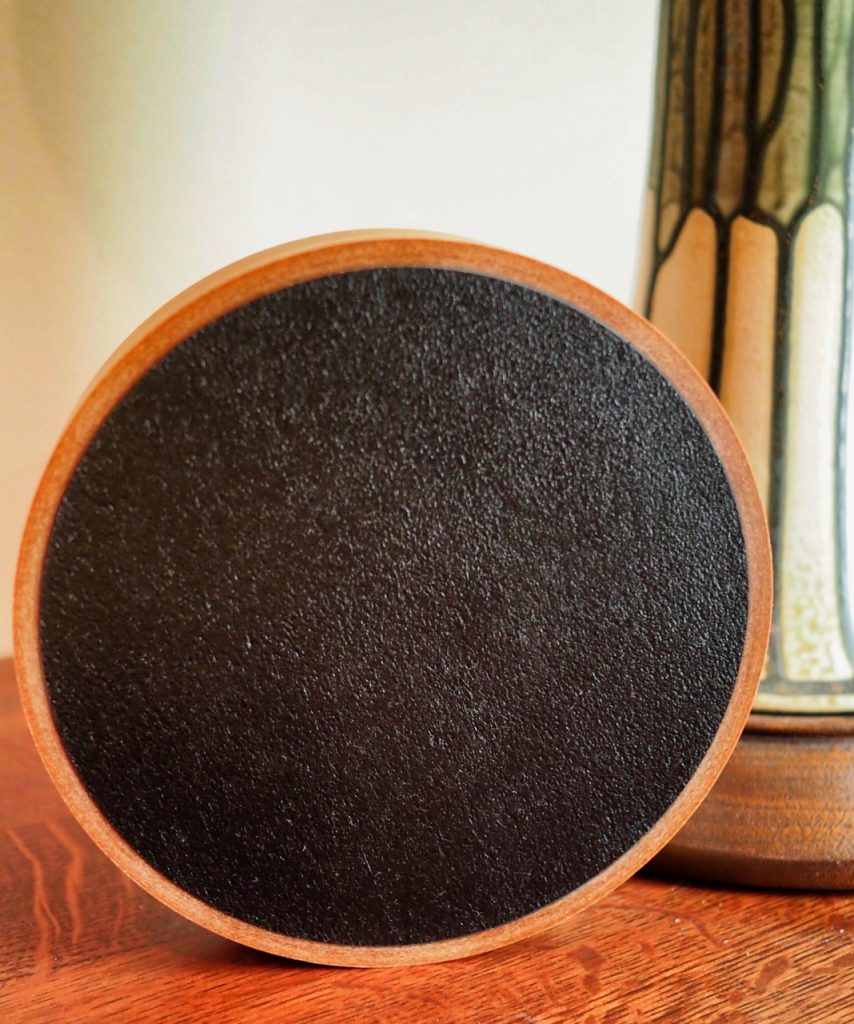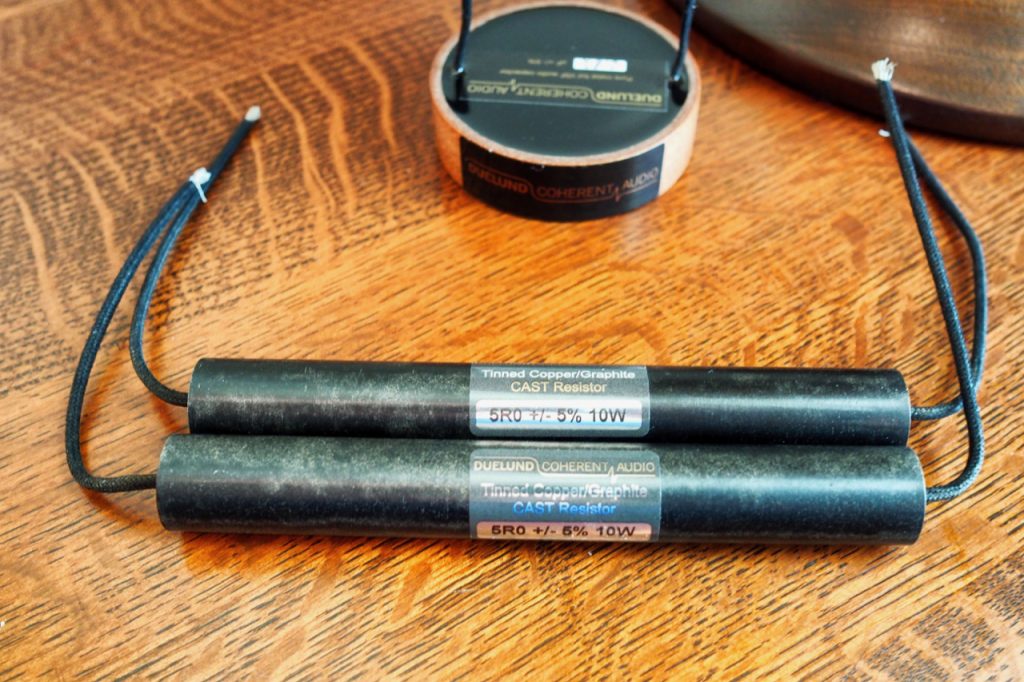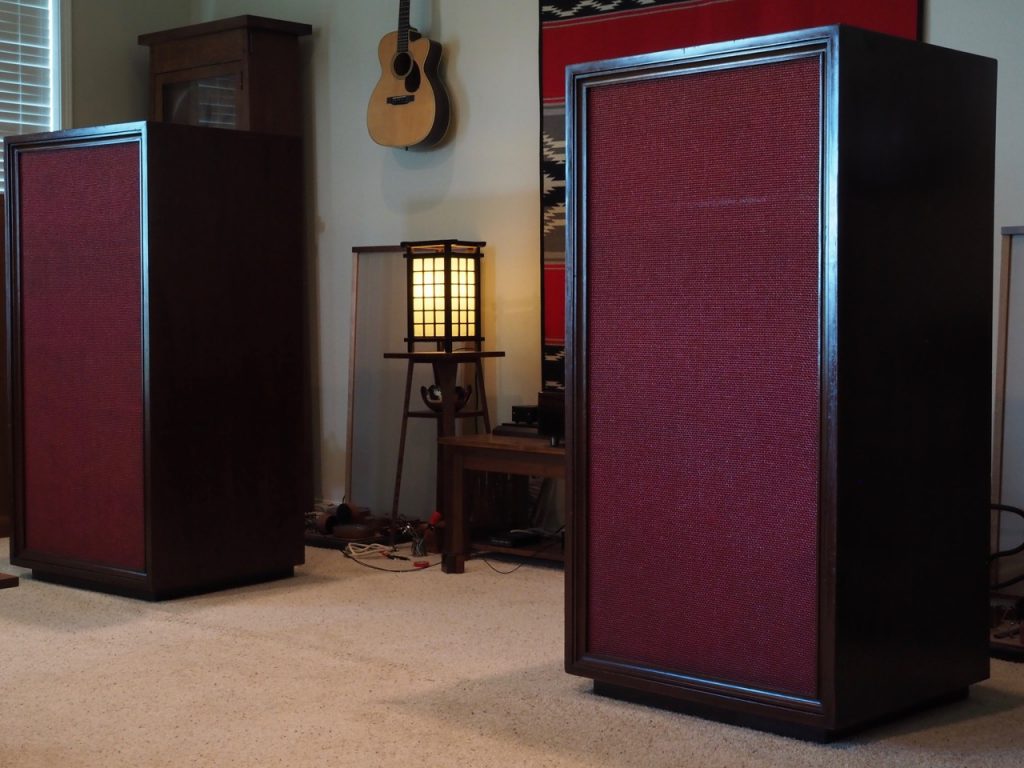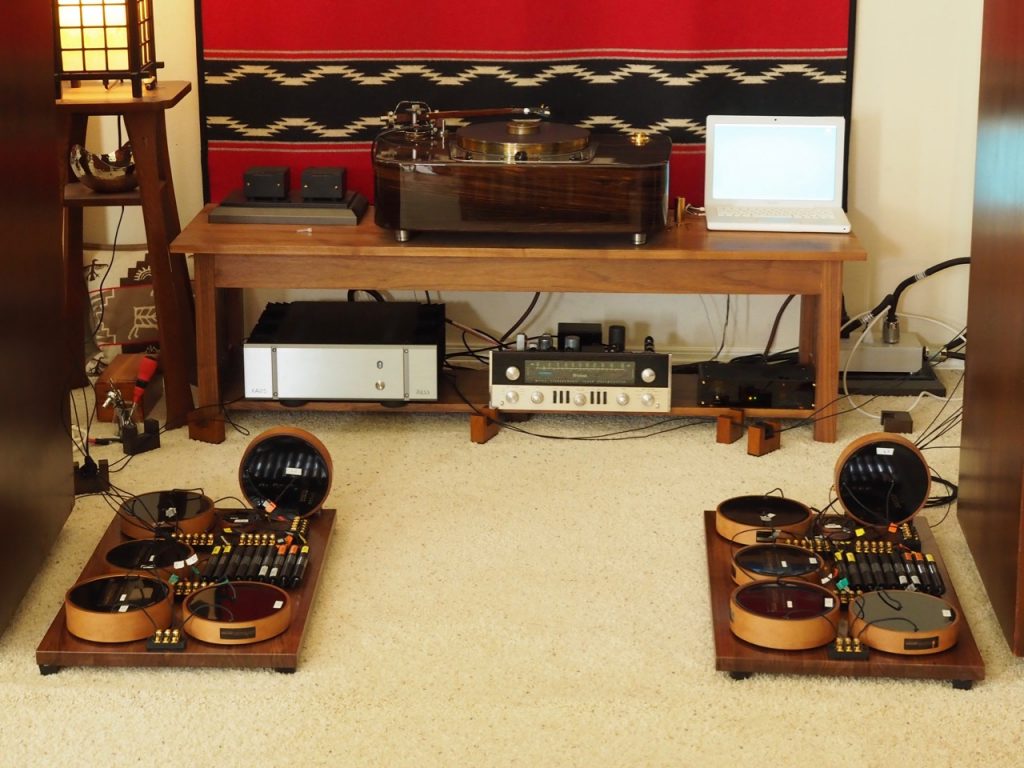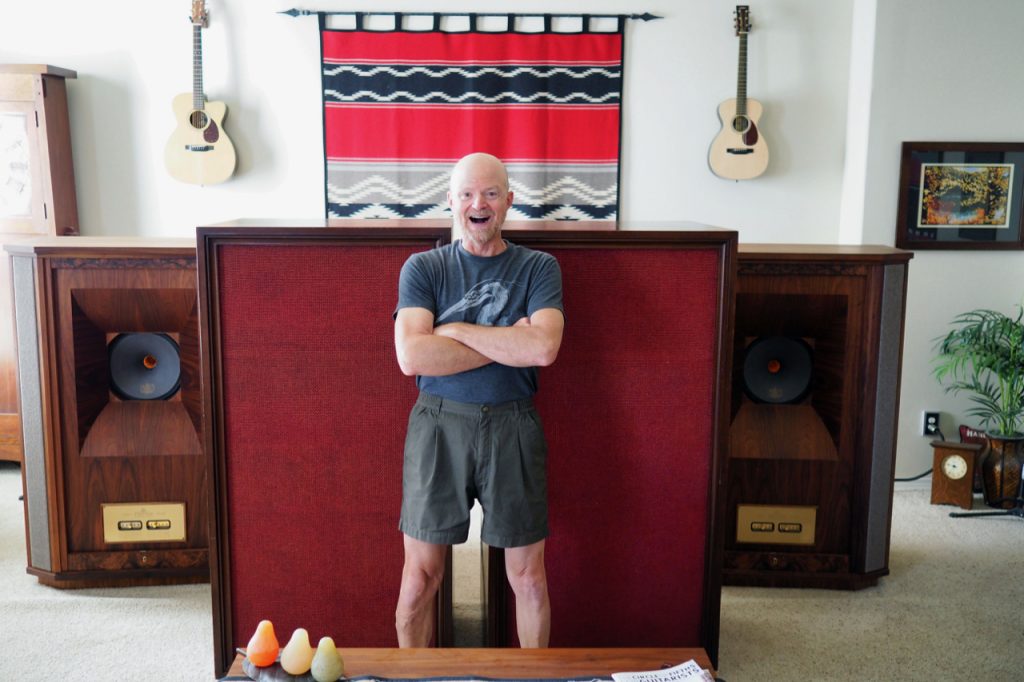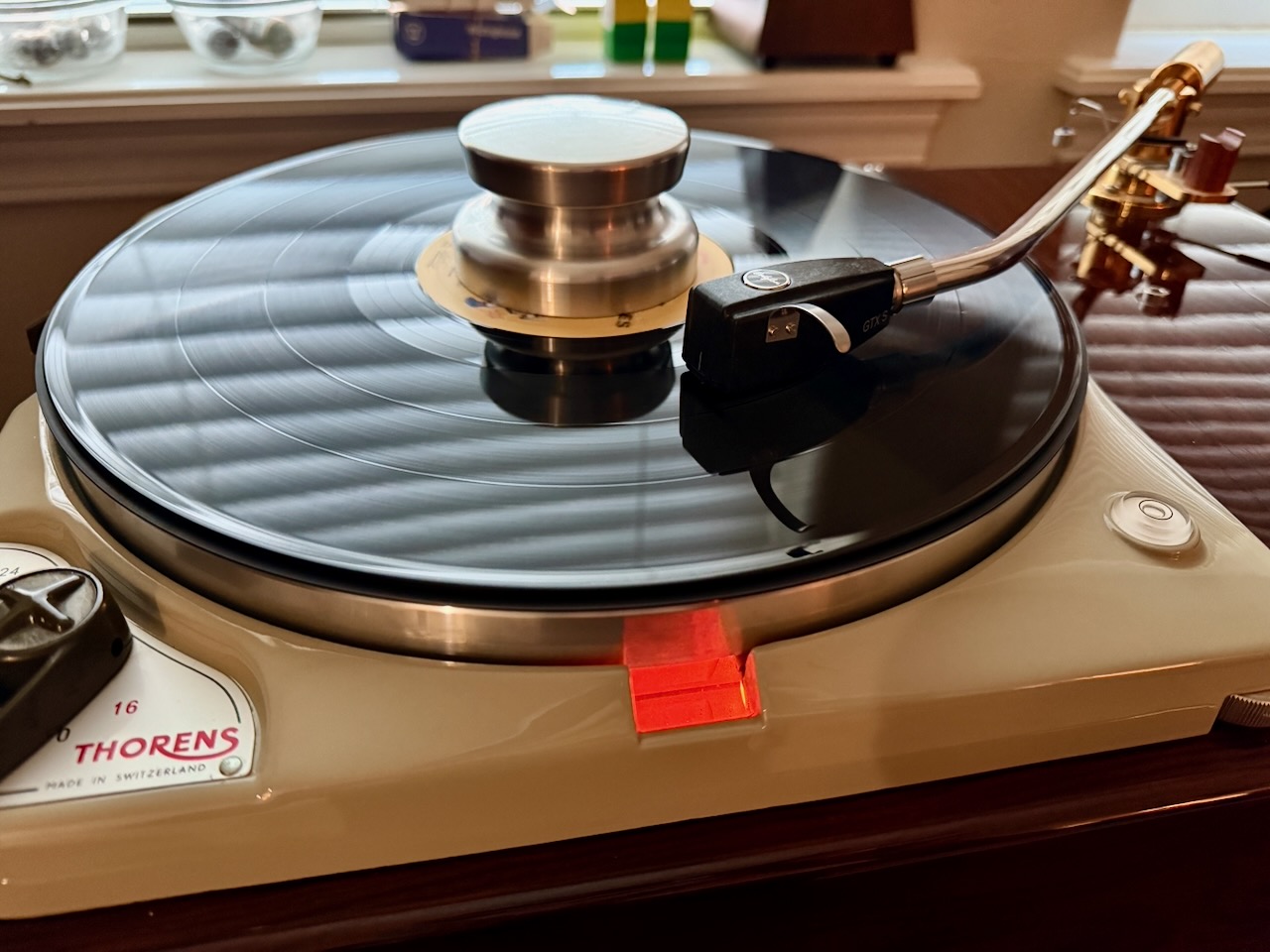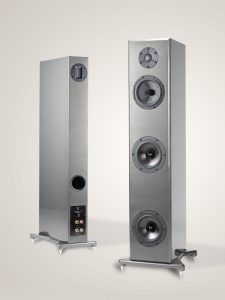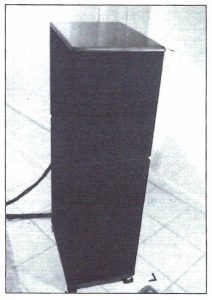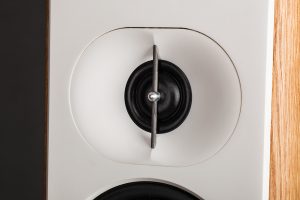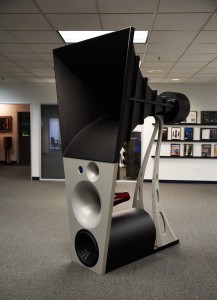The Duelund CAST Tinned-Copper Inductors
6.6mH Duelund CAST tinned-copper air core inductors were used in the crossover positions L1, L2, and L3, as indicated in the crossover diagram below.
An inductor (also called a choke) is a passive device that stores energy in its magnetic field (a capacitor stores energy in its electric field, for example).
The Duelund CAST tinned-copper air core inductor—as the name implies—utilizes an air core that annealed soft tinned-copper foil in natural paper and oil is wrapped around, instead of being wrapped around a magnetic core as with many other inductors.
To construct a Duelund CAST tinned-copper air core inductor a foil of tinned-copper is initially wound with paper around an air core to a certain value of inductance that is greater than the needed inductance (which is 6.6mH for L1, L2, and L3, in the case of the Duelund Altec Project).
Then the coiled tinned-copper foil is put under vacuum pressure in an oil tank at high temperature for about a week to permeate everything with oil. Then the tinned-copper foil is coiled by hand in a humidity and temperature-controlled room to an exact inductance specification, and then it is placed back into the oil. Immediately after this the winding is sealed with a special lacquer that takes a week to cure.
During this process a ring of vacuum impregnated paper has been readied with a base of CAST material (above).
As you can see in the photo above the completed CAST base has a leather-like surface texture.
Then the coiled foil is heated and placed in the ring & base assembly and CAST material is poured on top of it in five stages.
A precisely controlled flame is then quickly applied over the surface to drive any air bubbles out of the CAST material (the black glossy material you see in the photo below).
Following this step, the Duelund CAST tinned-copper air core inductor is measured and checked against controls to ensure quality. The total production time is typically six to eight weeks to make each inductor.
Each 6.6mH Duelund CAST Sn-Cu Air Core Inductor is 7 inches across (17.78cm), 1.5 inches tall (3.81cm), and weighs 3257 grams (7.18 pounds) - they're big and heavy!
The leads are Duelund DCA12GA tinned-copper wire.
Frederick told me, "As far as I know, the Duelund CAST air core inductors are the only paper-in-oil inductors commercially available to this day."
Frederik pointed out to me that many people mistakenly think inductors aren't as important as other circuit components because they typically deal with lower frequencies.
He said, "In fact it's the total opposite, the lower registers are far more resonant in nature than high frequencies, which means resonance control becomes even more important. People are always slow to try the inductors, but when they eventually do, they are always amazed at the difference."
The pricing for the Duelund CAST tinned-copper air core inductors is approximately 10% higher than the Duelund CAST pure copper air core inductors due to the additional cost of the tinned-copper foils.
The Duelund CAST Carbon / Tinned-Copper Resistors
I really want to thank Frederik Carøe for being so generous as to indulge a resistor idea of mine for this project, and then going way beyond what I imagined to handcraft a truly amazing resistor, which Frederik humorously dubbed the "Jeffistor."
The idea behind this resistor was a result of my listening impressions while doing trials with various resistors, where I had observed some desirable aural traits.
My first aural observation was that I found the musicality and sound of carbon composition resistors more enjoyable than the other types I've listened to, like metal film resistors or wirewound resistors, for example.
While those other types of resistors can be nice in the right applications, overall, they don't display the natural "organic" sounding musicality of carbon composition resistors in the applications I have compared them in (preamplifier & amplifier electronics, and crossovers).
My second aural observation was that resistors with smaller gauge number leads (larger wires) tended to have more natural overall tone than those with larger gauge number leads (smaller wires).
This was similar to the result I noted when I wrote the article for Positive Feedback about the Duelund DCA series of tinned-copper wires (HERE), where I observed that: "The smaller-gauge number tinned-copper cables (like the DCA12GA) go from sounding warmer and richer, to sounding brighter and clearer with the larger-gauge number tinned-copper cables (like the DCA26GA)."
My third aural observation was that the composition of the lead wire makes a difference to overall voicing of the resistor. When I tried identical Duelund CAST carbon composition resisters in my Tannoy Westminster's crossovers, one with pure silver leads, and one a prototype with tinned-copper leads, they sounded and performed a little bit differently.
The silver leads had more "sheen" in the upper frequencies, and the tinned-copper leads sounded subtly more relaxed tonally, which I liked. The Duelund CAST carbon composition resistors with the tinned-copper leads also displayed greater ease dealing with dynamic peaks, which I also liked.
My fourth aural observation was that when I compared two resistors in parallel versus a single resistor of the same value, the tone improved and the sound was more natural when there were two resistive elements in parallel.
So, when you put all those aural observations together, my preferences were for carbon composition resistors, with dual parallel elements, and with tinned-copper leads with a smaller gauge number (larger wire).
When Frederik and I were initially talking about the Duelund-Altec Project, I shared the above perceptions with him, and asked Frederik if he would be interested in making some resistors with those traits for the project.
Frederik said "yes" and the "Jeffistor" was the resultant resistor.
The "Jeffistor" is a Duelund CAST carbon / tinned-copper resistor that contains three individual carbon resistive elements in parallel (thus the jumbo-sized body), DCA12GA leads, and is treated with CAST material for damping in the same way as the Duelund CAST inductors and capacitors.
I must confess I was rather stunned by the sheer size of the cigar-sized "Jeffistor" with its DCA12GA leads. Frederik never does anything that isn't impressive in the extreme, and the "Jeffistor" is a case in point.
There are four resistor values used in the Altec crossover circuit, as shown below in the schematic:
- One 140 Ohm 10W Duelund CAST resistor at R2.
- "One" 24 Ohm 50W Duelund CAST resistor at R3 (comprised of five 4.8 Ohm 10W Duelund CAST resistors in series connection).
- One 100 Ohm 10W Duelund CAST resistor at R4.
- "One" 10 Ohm 20W Duelund CAST resistor at R5 (comprised of two 5 Ohm 10W Duelund CAST resistors in series connection)
R2 Duelund CAST Carbon / Sn-Cu 140 Ohm 10W Resistor
We used the Duelund CAST carbon / Sn-Cu 140 Ohm 10W "Jeffistor" in R2, and they are about six inches long, about as big around as a cigar, and weigh in at a hefty 69 grams, as do the other values of "Jeffistors."
R3 Duelund CAST Carbon / Sn-Cu 24 Ohm 10W Resistor
"One" 24 Ohm 50W Duelund CAST "Jeffistor" resistor was used at R3 (which was comprised of five 4.8 Ohm 10W Duelund CAST "Jeffistor" resistors in series connection).
R4 Duelund CAST Carbon / Sn-Cu 100 Ohm 10W Resistor
For R4 we used the Duelund CAST carbon / Sn-Cu 100 Ohm 10W resistor.
R5 Duelund CAST Carbon / Sn-Cu 10 Ohm 10W Resistor
For R5 we used two Duelund CAST Carbon / Sn-Cu 5 Ohm 10W "Jeffistors" in series to get the requisite 10 Ohms needed.
I should point out that at the start of this project the "Jeffistors" were one-off prototypes, or perhaps I should call them one-off experiments to test an idea about resistors, but after blogging about them at Jeff's Place over the course of the Duelund-Altec Project, they have become semi-production items that you can request on special order.
They are rather amazing to behold, and all I can say, Frederik, is "Wow!"
Frederik has told me that the "Jeffistors" are rather expensive compared to the standard Duelund CAST resistors due to the huge amount of hand labor involved in making them, coming in at €150 or thereabouts.
The "Stokowski" Altec's
Now that we've covered in detail the Duelund CAST tinned-copper components that were utilized in building the Duelund-Altec Project crossovers, let me tell you the details of the loudspeakers for the Duelund-Altec Project, the vintage—almost six decades old—"Stokowski" Altec's.
You might wonder why one would build such exotic and high-performance crossovers for an almost six decades old pair of vintage Altec loudspeakers?
It's a fair question.
There're two reasons, really, with the first reason being the high-performance nature of these particular vintage Altec loudspeakers themselves, with the second reason being these vintage Altec's are historically important because of the person they were custom made for, famed conductor Leopold Stokowski (April, 18, 1882 to September 13, 1977).
As I will discuss in a moment, those two reasons are inextricably combined in the high-performance nature of these vintage Altec loudspeakers.
Let's first talk about the high-performance nature of these vintage Altec loudspeakers in and of themselves.
Most people don't usually connect the terms "vintage" with "high-performance," assuming instead that these two terms must be mutually exclusive. After all, don't the latest models of hifi offerings being produced for audio enthusiasts today represent the maximum attainable performance by leaps and bounds over the vintage equipment?
Peter Qvortrup (Audio Note UK), certainly couldn't be accused of falling into the "most people" category on this topic, as I've discussed in blog posts at Jeff's Place related to my recent visit with Peter in Brighton, England.
Peter says that the peaks of high-performance developments in the recording and audio arts occurred early in audio and recording history, with the performance peak for recording quality and software quality occurring from approximately 1950 to 1960, the performance peak for amplification quality occurring from approximately 1920 to 1930, and the performance peak for loudspeaker quality occurring in the late 1930s, which was led by cinema sound research & development.
Peter also says since those peak performance periods in hi-fi history, as time has progressed we have seen diminishing returns in performance advancements, or even diminishment in overall performance, in the recording and audio arts.
So that's not to say that there isn't some truly great audio gear being produced today, there certainly is, but rather that the advancements in performance in gear being produced today are present in diminishing returns – and the magnitude of those advancements might not be as great as many enthusiasts perceive—compared to the peaks of performance that occurred historically.
I certainly share Peter's perceptions about the peak performance periods of the audio arts based on my own experiences with vintage hifi gear, or obviously I wouldn't have engaged in this project utilizing the ultra-high-performance Duelund CAST tinned-copper components in the vintage "Stokowski" Altec loudspeakers and written this article about it.
I think I would expand Peter's range for the performance peak of loudspeaker quality a wee bit, and suggest a range from the late 1930s to the early 1960s, although it could be argued that those advancements from the late 1930s to the early 1960s are largely refinements of what was done in the late 1930s.
Nevertheless, the main point is still that this period of time was a period when huge efforts and financial resources were being poured into advancing cinema sound performance through research & development by companies like Western Electric and Altec, as well as other cinema sound companies around the world, and represents the peak performance period in the history of loudspeaker research & development.
These custom Altec loudspeakers were built for conductor Leopold Stokowski for listening to music in his home and represent an apogee of sorts for that loudspeaker performance period, and incorporated the accumulated insights, knowledge, and technology development for that period.
Are the "Stokowski" Altec's still high-performance loudspeakers in today's terms?
I would say, yes, they are, and as a case in point, when my good friend Chad (above) was visiting me in September 2018, we set up the "Stokowski" Altec's in the positions normally reserved for my hot-rodded Tannoy Westminster Royal SE loudspeakers, which are an example of very high-performance loudspeakers with their external Duelund CAST crossovers.
After getting the Altec's in place, Chad said he thought the vintage "Stokowski" Altec's—even with their stock N-500-D Altec crossovers—actually exceeded the performance of my heavily modified and "Duelund-ized" Westminsters, and as I would find out in later listening sessions with other audio enthusiasts, that they were about equally split on preferring either the performance of the hot-rodded Westminsters or the custom vintage "Stokowski" Altec's.
My observations are that the Westminster's Dual Concentric drivers are more coherent, the high-frequency driver & horn combination are more resolving, and the Westminster's extend lower in the bass, but the vintage "Stokowski" Altec's have an edge in overall musicality, and a greater sense of live-like musical realism.
Finding out that these nearly six decades old custom vintage "Stokowski" Altec's could go pretty much toe-to-toe with my heavily hot-rodded Tannoy Westminster Royal SEs was certainly a wake-up call for me, and underscores the validity of what Peter has said about the peak of loudspeaker performance quality being led by cinema sound research & development by companies like Altec (and others) in the early days of cinema.





